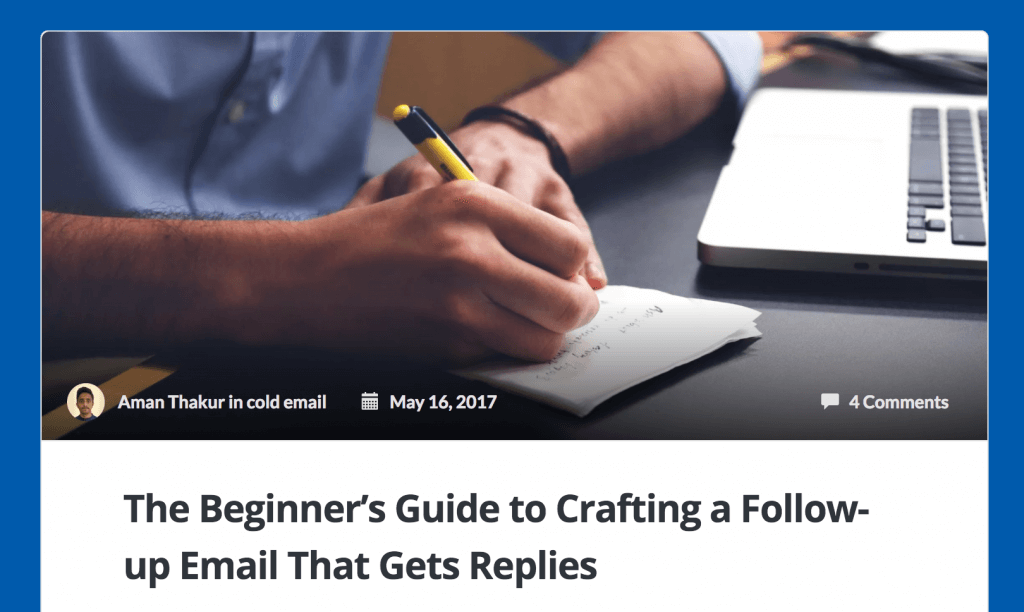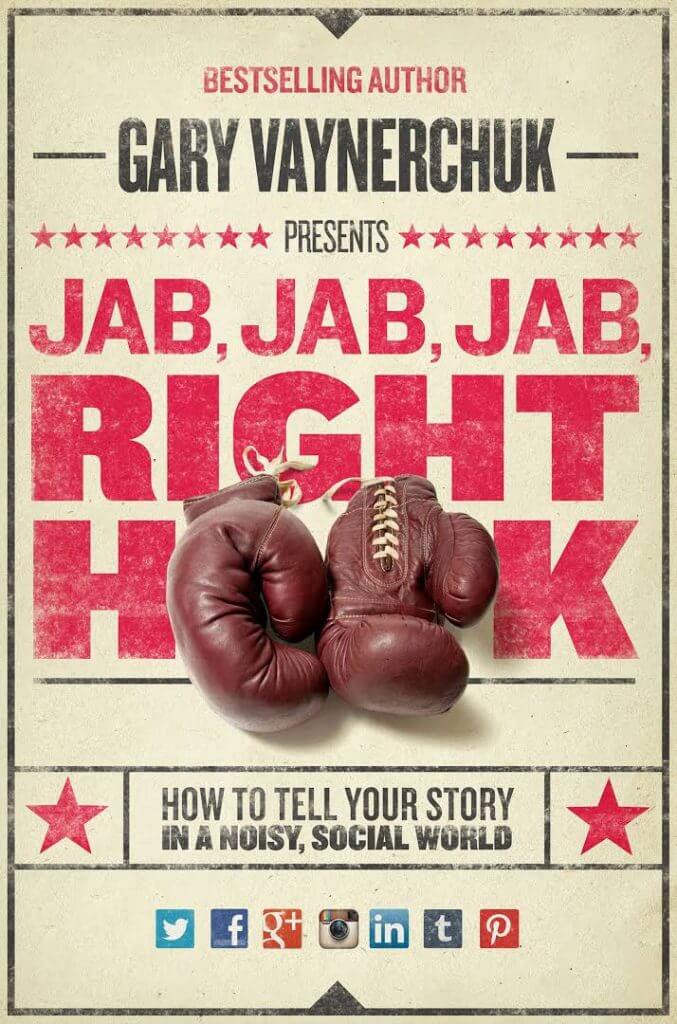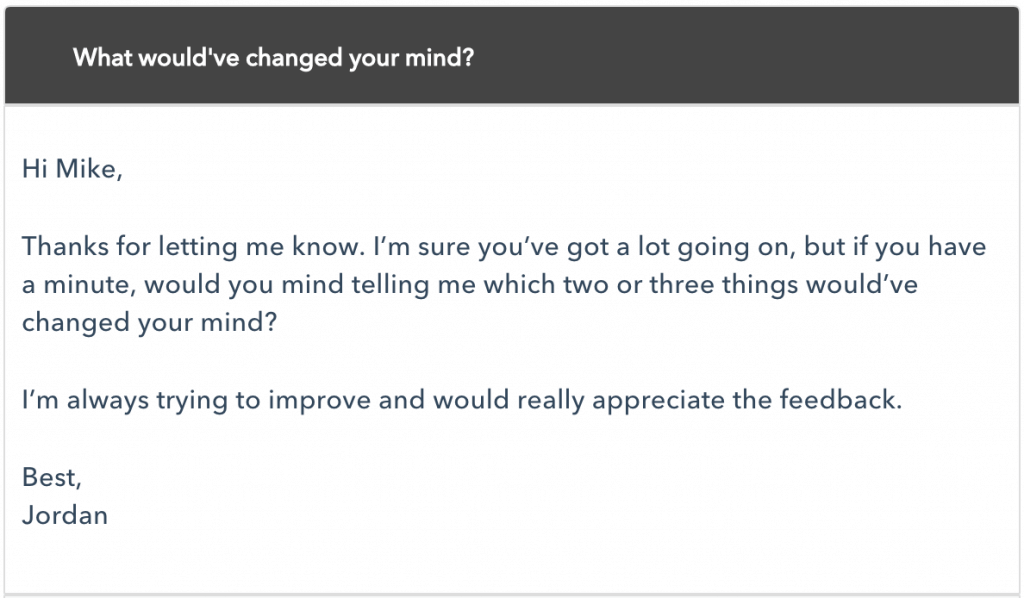How to Turn a “No” Into a “Yes” In Your Cold Email

Contents
You need a thick skin to send cold emails.
It’s no different than an actor trying out for a new part.
J.K. Rowling was turned down by 12 publishers.
Harrison Ford was told he’d “never succeed” in the movie business.
No record label would sign Jay-Z.
Dr. Seuss was rejected by 27 publishers.
Lady Gaga got dropped by her first record label.
But these people persevered in the face of continual rejection and succeeded. The same goes for cold emailing, where “no” often means “not right now.”
When people say things like “I’m not interested” or “it’s too expensive” early on, they’re likely not saying no to your product, service, or proposal.
Sales coach and author Keith Rosen said, “What they are really saying is, I’m saying ‘No’ or a form of ‘No’ because you haven’t given me enough of a compelling reason to buy from you or have satisfied all of my concerns and priorities.”

Understanding the small—but crucial—difference between a real “no” and a “not right now” can make the difference between closing the deal or forever missing out.
Here are five ways to tell whether ‘no’ really means “no,” and what you can do about it.
1. You Haven’t Followed Up Enough
“Only 30% of cold emails receive a response on the first try,” according to Yesware.
If you don’t follow up, don’t expect a response.
If they haven’t replied, it doesn’t mean they’re not interested.
But take heart, because there’s a 21% chance of receiving a reply to your second email, and a 25% chance on your third.
So why then do 70% of salespeople not follow up at all?
This is staggering when you consider that it takes an average of 5 follow-ups to close a sale.

You need to follow up at least four times to significantly improve your chances of success.
“You want to avoid the typical ‘checking in’ or ‘I haven’t heard back’ follow-ups. Instead, try to bring value,” says Justin McGill, founder of LeadFuze. “Use a case study for one follow-up, ask a question for another follow-up, link to a relevant blog post for another, or focus on a different benefit than what you did in your previous emails.”
Also, when you follow up, use ‘Re:’ in your subject line. A study by ContactMonkey found emails using “Re:” have much higher open rates than any other subject line.
For more tips, check out our in-depth guide, “The Beginner’s Guide to Crafting a Follow-up Email That Gets Replies.”

2. They Don’t Trust You or Your Product/Service
Do you buy from brands you don’t trust?
Do you partner with people you don’t know?
It’s no surprise that 77% of consumers are more likely to buy a new product when learning about it from friends or family. We trust these people the most.
If you don’t earn your recipient’s trust quickly, you’re dead in the water.
If they’re holding back or seem reticent to learn more, you may not have established trust in your brand. But how can you earn someone’s trust quickly?
Start with social proof.
Unbounce defines social proof as, “The positive influence that’s generated when people find out that ‘everybody’s doing it’.”
It’s the shortcut we use to help us judge the value of something—or someone—by asking, “Do other people value it/them?”
It sounds new-agey. But it’s really not.
Marketers have been taking advantage of using spokespeople to sell products for decades.

Some common ways to demonstrate social proof include using testimonials, displaying badges of prominent partners or clients, or sharing the number of users you have.
Next, you must do everything possible to avoid the ‘boomerang effect.’
Wikipedia describes this as “the unintended consequences of an attempt to persuade, resulting in the adoption of an opposing position instead.”
Or more simply:
- They perceive you as pushy, a nuisance, there to make a quick buck, etc.
- So they dig their heels in.
A good way to prevent or disarm the boomerang effect is by using Gary Vaynerchuk’s ‘Jab, Jab, Jab, Right-Hook’ methodology.

“It means give, give, give—and then ask,” Vaynerchuk explains. “My problem was that 97% of marketers on social networks think they’re in the “right hook, right hook, right hook” business, where every Facebook post, every blog post, every tweet on Twitter is trying to sell something.”
Instead of pitching people directly, give value without getting anything in return first.
“It’s just like interacting with your neighbor across the street,” Bryan Harris, founder of Videofruit, says. “If one day I asked her for an egg, she’d come running. It’s basic human behavior. If you give someone something, they’ll want to give you something back.”
Save them time, provide a personalized sample, give them a free trial, etc. Don’t just go straight for the sale.
When you do ask for something, ask for it. Don’t just drop in the link or resource and expect it.
For example, Andy Crestodina of Orbit Media was recently sending out emails for his annual blogger survey.
We know each other, yet I didn’t respond to the first two emails. I wanted to but got busy.
The third follow-up attempt pulled me in, though.

You’ll notice that there’s still no forced survey link. He waited until there was a response before sending it over.
3. They’re Still Wondering, “What’s In It For Me?”
You painstakingly crafted the perfect cold email, made an effort to establish trust, followed up, and have finally received a response… that says they’re not interested.
But, you’re not out of the game yet. Perhaps it’s a case of ‘WIIFM’—”what’s in it for me”?
Remember, people buy when it solves a problem or benefits them in some way.
So ask yourself: Do they see how your proposal will meet their needs? Do they understand the benefits? Do they feel your product has perceived value?
If you haven’t demonstrated the benefits of your proposal to the recipient, they’re not going to bite.
To remedy this, don’t tell them about the features, show them the benefits.
Economist and Harvard professor Theodore Levitt famously said, “People don’t want to buy a quarter-inch drill. They want to buy a quarter-inch hole.”
And remember the “sell me that pen” scene in The Wolf of Wall Street?

Or, Apple’s advertisements for the iPod?

They both focus on the benefits of the products, not the features.
You can even go one step further, and instead of selling benefits, you can sell value.
In the Apple example above, “1,000 songs in your pocket” is the benefit. The value is that your music collection is now completely portable. You won’t have to carry around a case of CDs anymore.
Although value is often inferred, it can help to connect the dots for your recipient.
4. You Can’t Close Them or They Don’t Respond
If you’ve done everything you can to build trust, communicate value, and create a sense of urgency, and you still can’t close them, it might be time to let them go.
But what if they still show signs of interest? Well, now you’re in the long game.
63% of people requesting information on your company today will not purchase for at least three months—and 20% will take more than 12 months to buy.
Ease back on the hard sell and focus on strengthening your relationship.
Let them off the hook to relax them. Say, “Look, I can see you’re interested, but perhaps this isn’t the best time for you?” then ask when it might be a better time to circle back.
Next, add them to the segment of leads that need more nurturing in your CRM.
At this point, it’s time to schedule your follow-up. Go back to the first strategy on this list and start working your way down again!
Or it might be time to send the ‘break up email’…
If they still haven’t responded (or never did in the first place), it’s time to break up.
Well, to pretend to anyway.
The ‘breakup email’ aims to jolt a relationship back to life, or to close it for good. It’s also a useful way to gather important feedback for future email campaigns.
It works for one simple reason: People want what they can’t have.
In psychology it’s called the ‘forbidden fruit hypothesis’—where the more forbidden something is, the more desirable it becomes.
Katharine Derum, Senior Sales Manager at Hubspot, said, “My team sees a 33% response rate on break-up emails.”
Here’s an example sent to Michael Pici, director of sales at Hubspot, after he told the sender he wasn’t interested:

Pici said it worked for four reasons:
- It played on his desire to help. “Like most people, I like the boost of doing a good deed.”
- It’s simple. “I knew I could help Jordan in under five minutes.”
- It felt genuine. “I truly believe Jordan wanted my opinions and would incorporate them into her future conversations with prospects.”
- It made him think about the product and why he had walked away. “I had trouble coming up with a valid reason for deciding against buying.”
Pici goes on to say, “I didn’t think twice before hitting ‘Reply.’ And before you think, ‘Sure, a response is good, but only if it leads to a sale’—I ended up buying.”
Alternatively, here’s a template that you can use:
Hi [prospect name],
Thanks for taking the time to [talk to me about, consider, download a trial of] product X. I understand if it’s not a fit and [wish you the best with Y opportunity, hope you find a solution to Z problem].
I’m sure you’ve got a lot going on, but if you have a minute, would you mind telling me which two or three things would’ve changed your mind?
I’m always trying to improve and would really appreciate the feedback.
Best,
[Your name]
By sending a break-up email, you may just shock the relationship back into life. And if not, at least you know where you stand and can move on to other opportunities.
5. “No” Really Does Mean “No”
Alas, some things are not meant to be.
We often hear that a sale starts with “no,” or that you should expect to hear “no” ten times before you make a sale.
But sometimes, “no” really does mean “no.”

If you’ve tried all of the strategies above, and are still facing a “no,” it looks like it’s time to move on.
Jim Keenan, CEO of A Sales Guy Inc, said, “Continuing to chase an opportunity after a ‘no’ takes time. It takes away from other opportunities. There is a cost to chasing after the no.”
Keep an eye on that opportunity cost—at some point, the scales will tip, and it will become counter-productive to continue chasing a cold lead.
If they respond to your break-up email with a “no”—or they don’t respond at all—send them a final email. In it, politely let them know you’re available if they ever want to reconnect and thank them for their time.
Then, move on.
Cold email someone else and then go back to the first strategy on this list: following up!
Conclusion
“No” doesn’t always mean “no” when it comes to cold emailing.
The tell-tale signs are there if you look for them. And there’s always an action you can take to move the relationship forward, whether towards closing or to let the prospect go.
So don’t give up without a fight.
Perseverance pays off. J.K. Rowling is now the richest author in the world.





